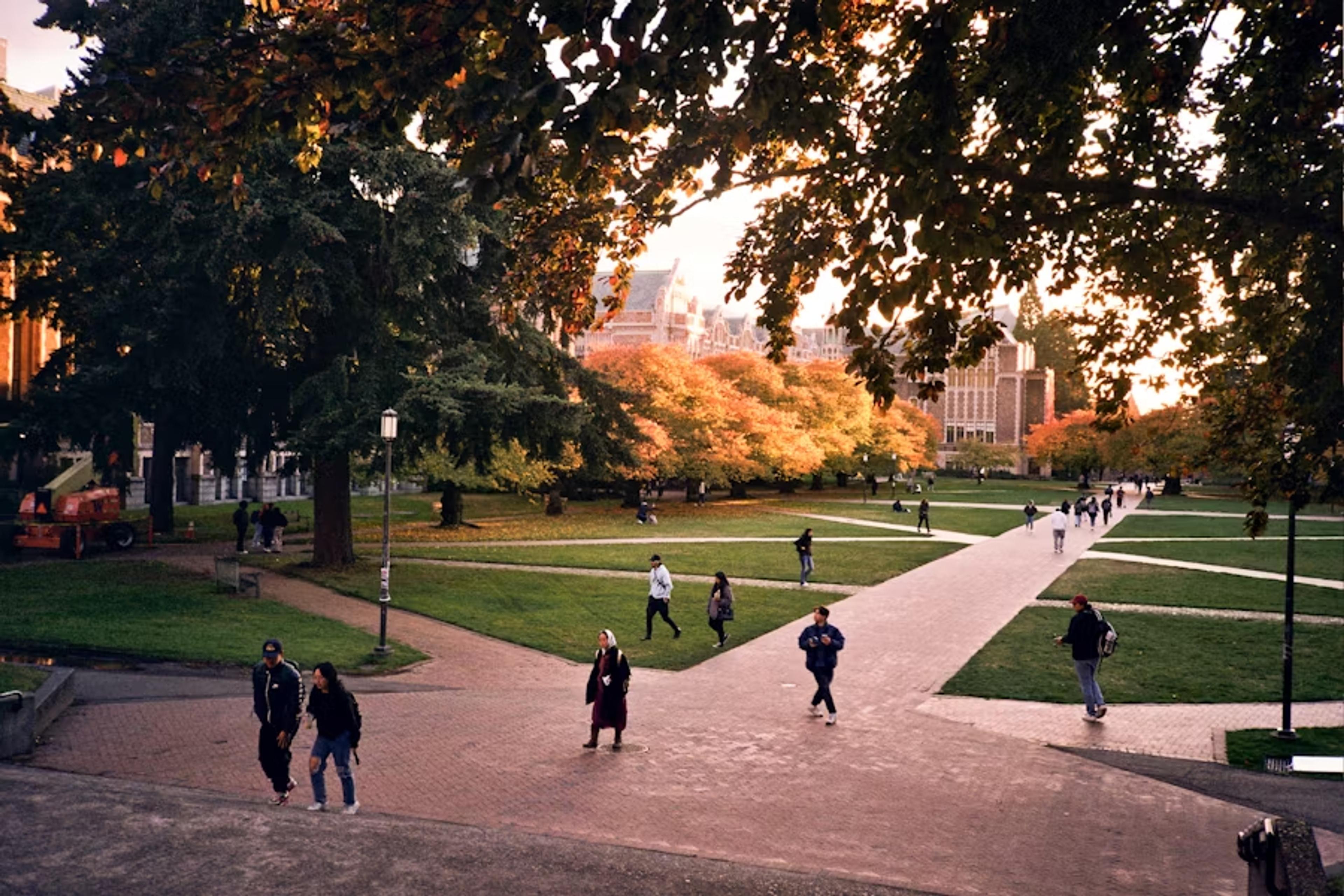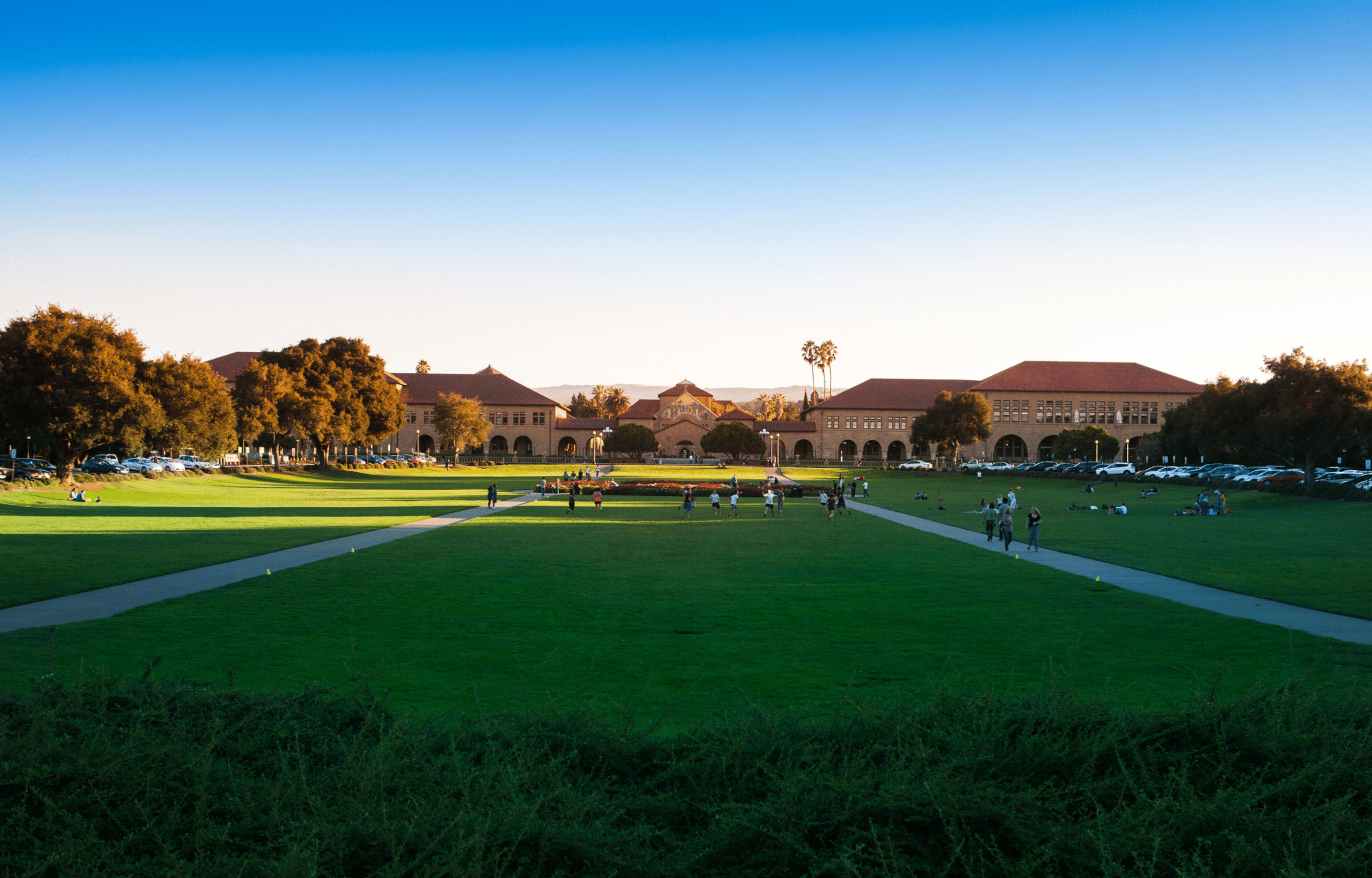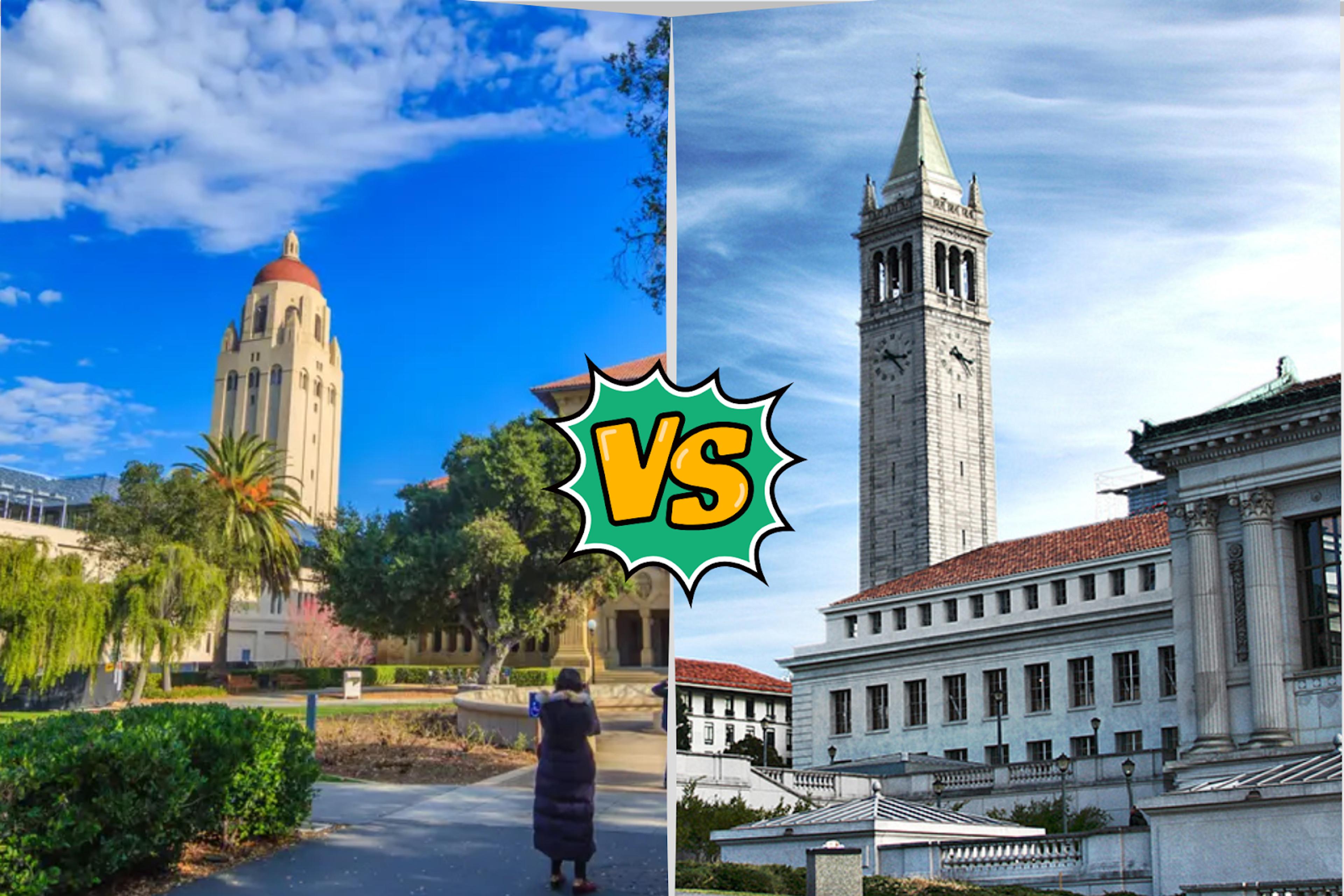
Join a free event
Learn from top coaches and industry experts in live, interactive sessions you can join for free.
Table of Contents
Stanford University and the University of California–Berkeley are two of the most exceptional schools in America. Both attract top students from around the world and offer outstanding academics, research opportunities, and career prospects. However, they differ in their admissions processes, student life, and financial aid packages. Choosing between Stanford University and UC Berkeley is a decision many high school students in California and beyond face. Both are among the most exceptional schools in the United States and have global reputations. Located in the Bay Area, they sit just about an hour apart, but the experiences they offer are very different.
For students deciding between Stanford and UC Berkeley, this guide provides a detailed comparison of acceptance rates, programs, tuition, and other key factors. Let’s dive in.
UC Berkeley vs. Stanford: An Overview
| UC Berkeley | Stanford University | |
|---|---|---|
| Location | Berkeley, California (near Oakland and San Francisco) | Stanford, California (near Palo Alto, Silicon Valley) |
| Type | Public University | Private University |
| Undergraduate Enrollment | 33,070 | 7,554 |
| Student-to-Faculty Ratio | 19.4:1 | 6:1 |
| Tuition (One Year) | $17,106 (In-State) $54,708 (Out-of-State) | $65,127 (Assuming 3-Quarter Attendance) |
| Average Need-Based Scholarship | $20,775 | $58,494 |
| Acceptance Rate | ~12% | ~3.9% |
| Campus Setting | Urban | Suburban |
| Strongest Areas | Engineering, Environmental Science, Social Sciences | Computer Science, Management, Engineering |
UC Berkeley
UC Berkeley, part of the University of California system, is a large public university located in Berkeley, California, just across the bay from San Francisco. Known for its academic rigor and deep research focus, Berkeley consistently ranks as the top public university in America. It enrolls over 31,000 undergraduates and offers standout programs in engineering, computer science, environmental science, and the social sciences. As a public institution, it provides lower tuition for in-state students, and its urban location gives students access to a wide range of cultural, academic, and professional resources. While the student-faculty ratio is higher than at private institutions, Berkeley’s faculty includes Nobel laureates, industry leaders, and pioneers across disciplines. The campus culture values independence, activism, and public impact, and the Berkeley alumni network is one of the largest and most active in the country.
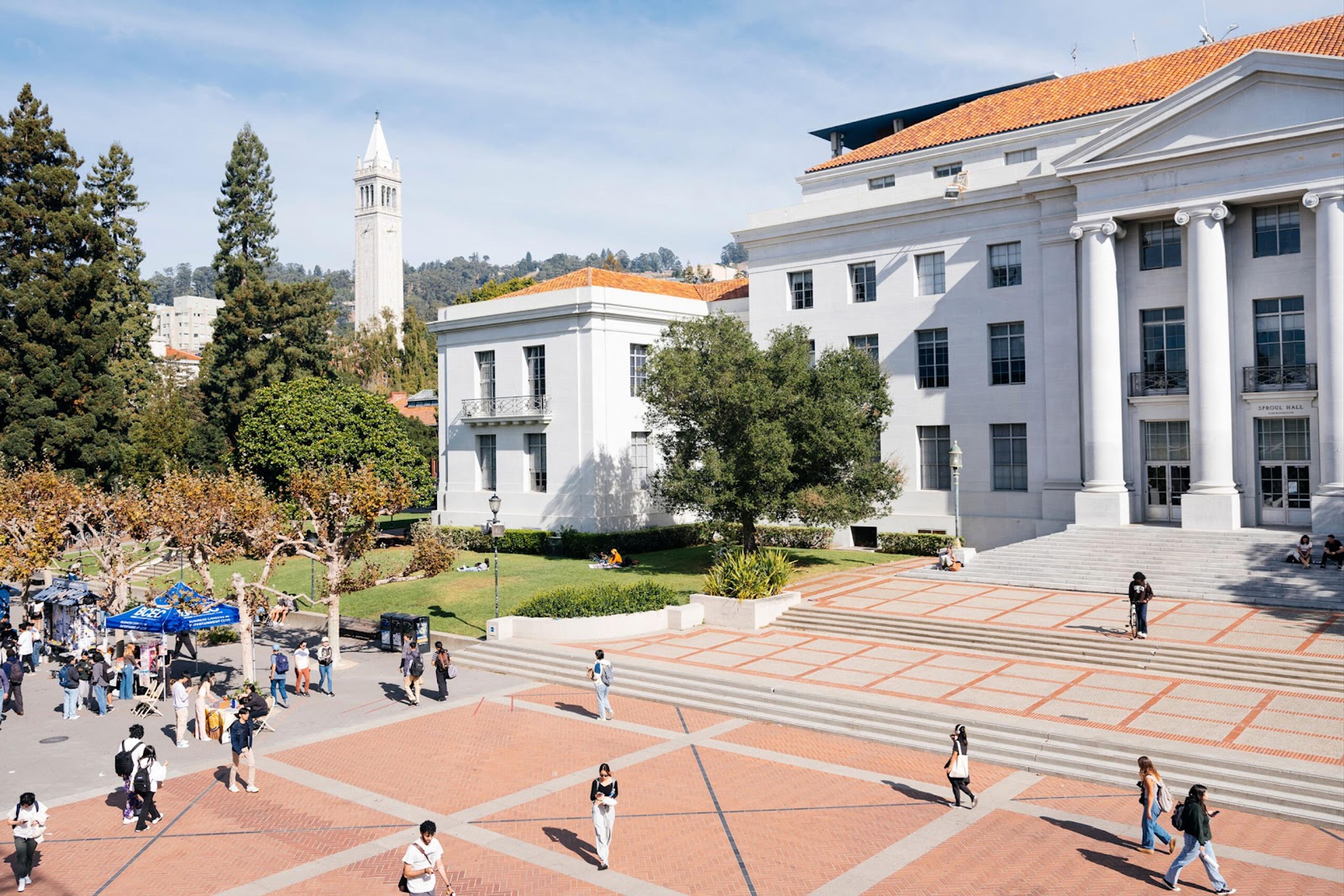
Stanford University
Stanford University is a private research university located in Stanford, California, in the heart of Silicon Valley. With around only 7,600 undergraduates, it offers a more intimate academic setting with a student-faculty ratio of 5:1 and a high level of individualized support. Stanford’s strengths lie in computer science, management, engineering, and interdisciplinary studies that blend technology with other fields. The school’s location gives Stanford students access to industry partnerships, internships, and mentorship from leaders at companies like Google, Apple, and Tesla. Stanford’s proximity to major tech firms is a major factor in its high post-grad earnings and startup activity. Although tuition is higher, the university offers generous need-based aid, with the average need-based scholarship exceeding $58,000. Stanford’s campus environment is highly residential, collaborative, and supportive, attracting students who are looking for a high-impact, innovation-driven college experience.
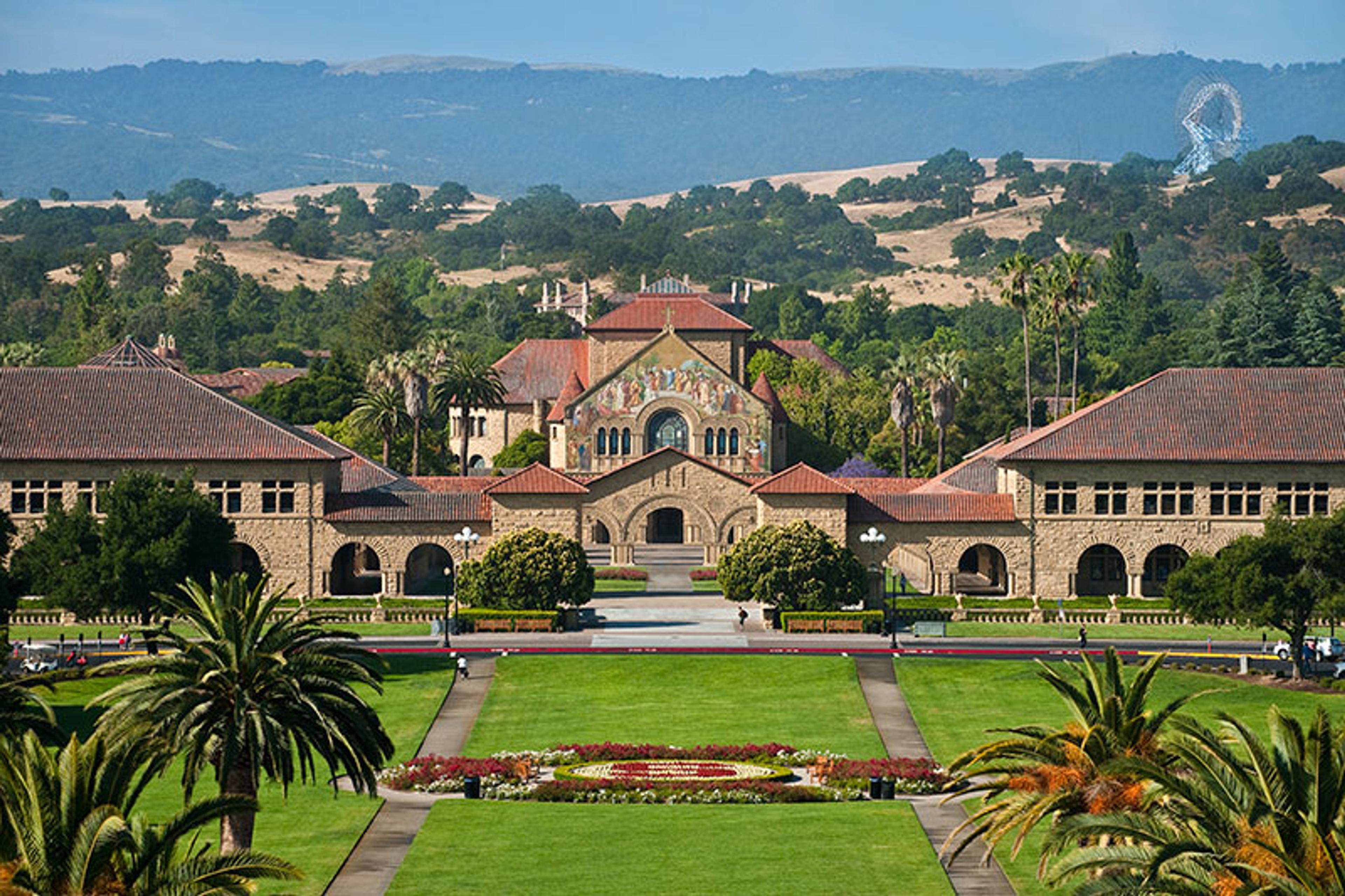
Application Process and Requirements
Application Platforms
UC Berkeley requires students to use the general University of California application. This single application is used for all UC campuses, and applicants can apply to multiple UCs simultaneously. Berkeley does not accept the Common Application or Coalition Application.
Stanford University uses the Common Application, which is widely accepted across private colleges in the U.S. Stanford applicants are required to submit the Common App along with Stanford-specific components. The application can be submitted through two plans: Restrictive Early Action (REA) and Regular Decision.
Application Deadlines
UC Berkeley
UC Berkeley follows a single regular admissions timeline. There is no Early Action or Early Decision option for any school in the UC system. All applicants, whether in-state, out-of-state, or international, follow the same schedule.
| Event | Date |
|---|---|
| Application Opens | August 1 |
| Application Filing Period | October 1-30 |
| Final Application Deadline | December 2 |
| Financial Aid Applications Open (FAFSA/CADAA) | December 1 |
| Application Receipt Confirmation | By Early December |
| First-Year Decisions Released | End of March |
| Deadline to Accept Admission Offer (First-Year) | May 1 |
Note: Applications are due at 11:59 pm PT.
Note: UC Berkeley does not accept updates or supplemental materials after submission. Students must self-report their academic history accurately in the application. Official documents are only required if admitted.
Read: UC Berkeley Acceptance Rate (2024-2025) — Breakdown & Analysis
Stanford University
Stanford offers two application options: Restrictive Early Action (REA) and Regular Decision. REA is non-binding but limits where else you can apply early.
| Event | Restrictive Early Action (REA) | Regular Decision |
|---|---|---|
| Optional Arts Portfolio Deadline | October 15 | December 5 |
| Application Deadline | November 1 | January 5 |
| Missing Documents Notification | Mid-November | Mid-February |
| Decision Notification | Mid-December | Early April |
| Reply Deadline | May 1 | May 1 |
*REA is non-binding but restricts students from applying early to other private colleges with binding or restrictive early programs. Students can still apply to public universities with non-binding early deadlines.
Required Application Components
UC Berkeley
Applicants must complete the UC application, which includes:
- Personal insight questions, each with a 350-word limit – applicants have eight prompts to choose from and must choose four to respond to
- No letters of recommendation are accepted (except for specific, invitation-only cases)
- Standardized testing is not considered, UC Berkeley is test-blind
- Self-reported academic history (transcripts are submitted only after admission and enrollment)
- Extracurricular activities, honors, and awards section
- No supporting documents (portfolios, resumes, media, etc. are not reviewed)
The review process at Berkeley follows a holistic evaluation model. This means there is no formula, no weighted scoring, and no minimum GPA or test score that guarantees admission. Applications are evaluated in the context of a student’s educational environment, opportunities, and challenges, with particular emphasis on how students respond to those circumstances.
Stanford University
Applicants to Stanford must submit the Common Application, which includes:
- The main Common App personal statement
- Three short Stanford-specific essays (100–250 words each)
- Letters of recommendation from two teachers in core academic subjects
- Counselor recommendation and a School Report Form
- Official high school transcript
- Midyear transcript due by February 15
- $90 application fee (fee waivers available through Common App or NACAC process)
- Optional arts portfolio (must be submitted by the earlier deadline if applicable)
- Standardized test scores are optional for the 2024-2025 application cycle, but will be required again starting Fall 2026
Stanford encourages students to apply to the university as a whole, not to a specific major or department. There are no major-specific applications or restrictions on changing majors later.
Acceptance Rates and Selectivity – How Hard is it to Get Into Stanford & UC Berkeley?
Stanford University and UC Berkeley are among the most selective institutions in the United States. Both attract high-achieving applicants from across California, the country, and the world. While Stanford’s overall acceptance rate is significantly lower, Berkeley’s top majors are just as competitive as Stanford’s overall admissions. Both schools require competitive applicants to have excellent high school academic performance, a history of leadership/community involvement, well-developed extracurricular activities, and a stellar application.
| Metric | UC Berkeley | Stanford University |
|---|---|---|
| Overall Acceptance Rate | ~12% | ~3.9% |
| Average GPA of Admitted Students (Unweighted) | 3.89 | 3.96 |
| SAT Range (Middle 50%) | 1350-1540 | 1500-1570 |
| ACT Range (Middle 50%) | 30-34 | 34-36 |
Note: Remember, UC Berkeley and the broader UC school system is test-blind — SAT/ACT scores are not considered in admissions decisions. Stanford is test-optional for the 2025 cycle but will require standardized testing starting in Fall 2026 admissions.
Major & Program-Level Selectivity
While Stanford is more selective overall, some UC Berkeley majors are more competitive than others:
- EECS (Electrical Engineering and Computer Sciences): Acceptance rates typically fall below 5%, especially for direct admits from high school.
- Haas School of Business: Highly competitive; admission typically occurs as a transfer during sophomore year, with limited spots available.
- College of Engineering: One of the most selective colleges within Berkeley, with programs like bioengineering, mechanical engineering, and computer science drawing thousands of applicants.
At Stanford, students apply to the university as a whole, not a specific major, though academic interest areas are considered. This allows for greater flexibility in exploring multiple disciplines after admission.
Academic Programs and Strengths
Curriculum Format
One of the biggest structural differences between Stanford University and UC Berkeley is how their academic calendars are organized. This difference may affect scheduling, workload, and how students explore different subjects across four years and is something to take into account when you apply.
Stanford: Quarter System
- The academic year is divided into four quarters (Fall, Winter, Spring, and Summer). Undergraduates typically take 3-4 courses per quarter, completing more courses overall, but each one moves at a faster pace. Most students are enrolled in three out of four courses, reserving the fourth for internships, volunteering, and other experiences.
UC Berkeley: Semester System
- The academic year is divided into two primary terms (Fall and Spring). Students take more courses per term and fewer overall, but have more time to engage deeply with course content.
Strengths by Field
Computer Science and Engineering
- Stanford is widely recognized for its strength in computer science, artificial intelligence, and software engineering, supported by its location in Silicon Valley. The university’s proximity to top tech companies and startups creates strong internship and research pipelines.
- UC Berkeley offers one of the country’s most competitive undergraduate programs in Electrical Engineering and Computer Sciences (EECS) through its College of Engineering. It also offers Computer Science (CS) through the College of Letters & Science, which is slightly less selective but still academically rigorous.
Environmental Science
- UC Berkeley integrates environmental science through multiple departments including Environmental Science, Policy, and Management (ESPM), Biological Sciences, and Engineering. The university has a long history of research in sustainability and public policy.
- Stanford offers interdisciplinary options through its School of Earth, Energy & Environmental Sciences, combining science, engineering, and entrepreneurship. Research often intersects with climate tech, energy, and conservation.
Business and Management
- UC Berkeley houses the Haas School of Business, which offers a selective undergraduate program. Students typically apply to Haas as sophomores after spending at least one year in the College of Letters & Science or another Berkeley college.
- Stanford does not offer a dedicated undergraduate business major. Students interested in business typically pursue Economics, Management Science and Engineering, or Symbolic Systems, depending on their focus.
Social Sciences
- UC Berkeley has a strong reputation in economics, political science, sociology, and public policy. Faculty are frequently involved in government consulting, public research, and advocacy.
- Stanford offers social science majors with an emphasis on faculty-student research, smaller class sizes, and more individualized academic support. Majors include Political Science, Economics, Sociology, Anthropology, and others.
UC Berkeley vs. Stanford: Student Body & Campus Environment
Campus Location and Setting
- UC Berkeley sits in the Bay Area, in a busy and diverse urban setting. It’s close to both Oakland and San Francisco.
- Stanford has a more suburban feel with one of the largest campuses in the country. The environment is quieter and more controlled.
Student Life Comparison
Campus Location and Setting
The two schools offer very different campus experiences based on geography and layout.
- UC Berkeley is located in a dense urban setting in the Bay Area, near Oakland and across the bay from San Francisco. The campus is walkable, and surrounded by restaurants, bookstores, and public transportation. It offers easy access to city life and off-campus work or volunteer opportunities.
- Stanford University sits in Palo Alto, a suburban city in the heart of Silicon Valley. The campus covers more than 8,000 acres, making it one of the largest in the country. The environment is quieter, more residential, and designed to keep most student activities within the university.
| Factor | UC Berkeley | Stanford University |
|---|---|---|
| Undergrad Enrollment | 33,070 | 7,554 |
| In-State Students | Majority (California residents) | National and international mix |
| Students Living On-Campus | 27% | 95% |
| Clubs and Organizations | 1,000+ | 600+ |
| Athletics | Pac-12, Big Game vs. Stanford | Pac-12, Olympic-level athletes |
Culture and Community
- UC Berkeley has a long history of student activism, especially around social issues and policy. Students often get involved in off-campus initiatives, internships, and advocacy groups. With fewer students living on campus, daily life tends to be more independent and flexible.
- Stanford students are more likely to participate in campus-based life, including dorm communities, university-sponsored events, and research groups. With smaller class sizes and a high student-faculty ratio, many students benefit from close academic relationships and structured support systems.
Tuition, Financial Aid, and Scholarships
Cost of Attendance
Both UC Berkeley and Stanford are highly respected universities, but the costs differ significantly depending on your residency and financial situation. UC Berkeley offers lower tuition rates for in-state students as a public university, while Stanford, as a private institution, applies the same tuition rate for all undergraduates regardless of residency.
Refer to the table below for a breakdown of estimated undergraduate costs for the 2024–2025 academic year:
| Cost Category | UC Berkeley (In-State) | UC Berkeley (Out-of-State) | Stanford University |
|---|---|---|---|
| Tuition & Fees | $15,891 | $48,465 | $62,484 |
| Room & Board | $20,244 | $20,244 | $20,607 |
| Books & Supplies | $1,272 | $1,272 | $825 |
| Personal Expenses | $2,720 | $2,720 | $2,355 |
| Transportation | $704 | $704 | $1,080 |
| Health Insurance (Waivable) | $3,576 | $3,576 | $7,128 |
| Total Estimated Cost | ~$44,407 | ~$76,981 | ~$94,479 |
*UC Berkeley’s health insurance fee can be waived with proof of equivalent coverage. Stanford includes health insurance in the total cost but also offers a waiver process.
**Actual costs may vary based on housing choices, meal plans, and individual lifestyle.
Financial Aid Programs
UC Berkeley
UC Berkeley offers a mix of need-based grants, scholarships, work-study, and limited loan options. The university participates in federal and state aid programs, including the FAFSA and California Dream Act. Over 65% of UC Berkeley undergraduates receive financial aid.
Key Programs:
- Berkeley Undergraduate Scholarship: Awarded to over 3,000 students annually based on merit and financial need.
- Middle-Class Scholarship: For California families with incomes and assets up to $217,000.
- Fiat Lux Scholarship: For students from underrepresented backgrounds.
- Regents’ and Chancellor’s Scholarship: The most prestigious merit scholarship at Berkeley.
- California Dream Act: Provides aid to AB540-eligible undocumented students.
Students are automatically considered for most UC Berkeley scholarships when they apply for financial aid through FAFSA or CADAA.
Stanford University
Stanford provides one of the most generous need-based financial aid programs in the country. The university does not offer merit-based aid; all aid is based on family financial circumstances.
Financial Aid Policy Highlights:
- Families earning less than $100,000/year with typical assets pay no tuition, room, or board.
- Families earning under $150,000/year with typical assets pay no tuition.
- Average need-based scholarship (Class of 2027): $70,349
- Aid packages include grants, scholarships, and work-study, but not loans.
Stanford meets 100% of the demonstrated need for all admitted students. Aid is calculated through both the FAFSA and the CSS Profile.
Example:
| Family Income Range | Avg. Scholarship & Grant | Avg. Net Cost | % Receiving Aid |
|---|---|---|---|
| Less than $75,000 | $92,303 | $4,380 | 98% |
| $75k–$100k | $87,348 | $5,890 | 97% |
| $100k–$125k | $76,834 | $13,201 | 97% |
| $125k–$150k | $69,600 | $19,979 | 100% |
| $150k–$200k | $57,205 | $31,459 | 94% |
Scholarship Opportunities
UC Berkeley
- Most scholarships at Berkeley are awarded based on a combination of academic performance and financial need.
- Students can also apply for outside scholarships and departmental awards.
- Scholarships are matched with students each year and may change based on continued eligibility.
Stanford University
- While Stanford doesn’t offer merit scholarships, students are matched with donor-funded scholarships based on eligibility.
- Students are encouraged to explore outside scholarships to help cover the student contribution portion.
Housing Costs
- UC Berkeley offers residence halls, apartments, family housing, and off-campus resources. About 96% of first-year students live in university housing.
- Stanford guarantees four years of housing for incoming first-year students, and over 95% of undergraduates live on campus. All first-year students are required to live on campus.
Career Outcomes and Alumni Networks
Both UC Berkeley and Stanford University offer strong career support and have solid job placement outcomes for their graduates. That said, the structure of their career services and the industries they feed into can differ based on the school’s academic strengths and location.
UC Berkeley
UC Berkeley’s Career Center provides advising, job and internship listings, career fairs, and on-campus recruiting. The center partners with top companies, especially in the Bay Area and California. Because Berkeley is a public university with a large student body, some services can be competitive to access, but the school’s proximity to Oakland and San Francisco means strong connections to a wide range of employers.
- Top industries for graduates: Technology, consulting, finance, public service, government, and academia.
- Popular employers: Google, Apple, Meta, Salesforce, Amazon, Tesla, and various government agencies.
- Graduate outcomes: According to the most recent First Destination Survey, around 70–75% of graduates secure full-time employment within six months of graduation, while 20% go on to graduate school.
- Median salary: Varies by major. For engineering and computer science graduates, starting salaries often exceed $100,000.
- Career fairs and recruiting: Large-scale career fairs attract hundreds of employers every semester.
- Public sector and nonprofit pipeline: Strong, especially in environmental science, education, and policy-related majors.
Stanford University
Stanford’s BEAM (Bridging Education, Ambition, and Meaningful Work) Career Education center offers personalized support, career coaching, and strong alumni connections. Due to smaller class sizes and more individual support, students often benefit from more direct access to opportunities.
- Top industries for graduates: Technology, venture capital, entrepreneurship, finance, consulting, research, and healthcare.
- Popular employers: Google, Apple, Goldman Sachs, McKinsey & Company, NASA, and many Silicon Valley startups.
- Graduate outcomes: Over 80% of graduates are employed or in grad school within six months. Many students receive multiple job offers before graduation.
- Median salary: For STEM and business-related majors, salaries are typically between $90,000–$130,000. Computer science majors often exceed this range, especially with equity or signing bonuses.
- Entrepreneurship focus: Stanford is known for its startup ecosystem, and many students pursue internships or co-found startups during undergrad.
- Graduate school placements: Many students go on to top law schools, medical schools, and graduate programs, often at Stanford, Harvard, or MIT.
Alumni Networks
Both universities have strong, global alumni communities, but the scale, influence, and types of opportunities they provide vary.
UC Berkeley
- Alumni size: Over 500,000 living alumni worldwide.
- Fields: UC Berkeley alumni are spread across academia, technology, science, law, journalism, public policy, and government.
- Notable alumni: Steve Wozniak (Apple co-founder), Gordon Moore (Intel co-founder), Eric Schmidt (former Google CEO), and many Nobel laureates and U.S. government officials.
- Alumni engagement: The Cal Alumni Association offers mentorship, networking events, and lifelong learning opportunities. Large events like Homecoming and Cal Day promote connection between students and alumni.
- Impact: Known for producing leaders in public service, education, and science. Many alumni hold influential roles in government, including mayors, governors, and federal advisors.
Stanford University
- Alumni size: Around 240,000+ living alumni.
- Fields: Stanford alumni dominate in tech, business, venture capital, academia, and the nonprofit world.
- Notable alumni: Elon Musk (SpaceX, Tesla), Sundar Pichai (Google CEO), Peter Thiel (PayPal co-founder), and Reed Hastings (Netflix co-founder).
- Alumni networks: Extremely active, especially in Silicon Valley and globally through the Stanford Alumni Association. Career connections and startup funding often come directly through alumni referrals.
- Influence: Stanford’s alumni network is tightly connected to tech and venture capital ecosystems. Many graduates go on to become founders or early employees at high-growth companies.
Stanford vs. Berkeley: Which School Is Best for You?
Both Stanford and UC Berkeley are world-class institutions, but they offer very different undergraduate experiences. If you’re trying to choose between them, consider your academic interests, financial situation, preferred learning environment, and long-term goals. Below is a breakdown of how to decide which school may be a better fit for you.
Choose Stanford if you…
- Want a smaller, more personalized college experience. With under 8,000 undergrads and a 6:1 student-to-faculty ratio, Stanford offers more intimate classes, individualized advising, and faculty support.
- Plan to enter the tech industry, startups, or venture capital. Stanford’s location in Silicon Valley—and deep alumni ties—make it the top launchpad for entrepreneurial and high-growth tech careers.
- Prefer flexibility in choosing your major. You don’t apply directly into a department, and you’ll have freedom to explore different disciplines before declaring.
- Are applying for need-based aid. If your family earns under $150K/year, Stanford may be more affordable than public schools due to its generous financial aid program.
- Thrive in a structured, campus-centric environment. Nearly all students live on campus for four years, and much of student life happens within university spaces.
Choose UC Berkeley if you…
- Are a California resident looking for a top-tier education at a lower cost. In-state tuition at Berkeley is one of the best values in higher education.
- Want access to one of the most prestigious public research institutions in the country. Berkeley offers a broader range of public-impact and policy-driven programs.
- Already know what you want to study. Especially if that’s in engineering, EECS, environmental science, or social sciences, Berkeley’s programs are deeply rigorous and well-regarded.
- Value urban access and real-world engagement. Located in the East Bay, Berkeley students can intern, volunteer, and work off-campus more easily than at a more residential campus like Stanford.
- Are highly self-directed and independent. With a larger student body and less structured support, Berkeley is best for students who can navigate opportunities proactively.
Still not sure?
Ask yourself:
- Do I want to be surrounded by high-intensity innovation and entrepreneurship (Stanford)? Or passionate activism and public service (Berkeley)?
- Would I prefer a fast-paced quarter system (Stanford) or deep dives in a semester system (Berkeley)?
- Is financial aid or in-state tuition going to be a deciding factor?
- Do I want the option to change majors easily, or am I targeting a specific program from day one?
Ultimately, there’s no wrong answer – just the better fit for you. Both schools open doors, challenge students academically and prepare graduates to make a significant impact in the world. The choice comes down to where you’ll thrive most.
The Bottom Line
Stanford University and UC Berkeley are both exceptional institutions with global reputations, but they offer very different undergraduate experiences. Stanford is smaller, more selective, and highly residential, with close faculty relationships and a strong pipeline into tech, entrepreneurship, and graduate programs. Its generous financial aid program significantly reduces costs for many families.
UC Berkeley, as a top public university, offers academic excellence across a wide range of disciplines, especially in engineering, computer science, and public policy. With lower in-state tuition, a larger and more diverse student body, and deep roots in public service and research, Berkeley appeals to students who value independence, activism, and access to the cultural and professional resources of the Bay Area. Both schools produce successful graduates and offer long-term career and alumni advantages – choosing between them should come down to your academic interests, financial situation, and preferred campus environment.
Get Expert Help Choosing the Right College
Need help deciding or working on your application? Talk to a coach to get personalized guidance and support. A college admissions consultant can help with every part of your application, from ACT/SAT prep to essays, extracurriculars, letters of recommendation, and more. See several popular coaches below, browse all here.
Related Resources:
- How to Write an Amazing College Essay: 3 Tips for Success
- How to Build the Best Extracurriculars for College
- Last-Minute ACT & SAT Tips to Boost Your Score
- College Student Resume — The Ultimate Guide (With Template & Examples)
FAQs – UC Berkeley vs. Stanford
Which is better, Berkeley or Stanford?
- It depends on what you’re looking for. Stanford has a lower acceptance rate, smaller class sizes, and strong ties to Silicon Valley startups and venture capital. UC Berkeley offers a top-tier public education, especially strong in engineering, computer science, and public policy, with lower tuition for in-state students. Both are exceptional schools with global reputations.
Is Berkeley as prestigious as an Ivy League?
- Yes. While UC Berkeley is not part of the Ivy League (which is a group of private schools in the Northeast), it’s consistently ranked among the top public universities in the world. Berkeley is known for academic rigor, Nobel Prize-winning faculty, and research impact across multiple disciplines.
Are Berkeley and Stanford rivals?
- Yes. UC Berkeley and Stanford are long-time rivals, especially in athletics. The annual "Big Game" football matchup is a major tradition. The rivalry also reflects deeper academic and cultural differences between the two schools.
Why is Berkeley so prestigious?
- Berkeley has a long history of academic excellence, influential research, and social impact. It’s produced Nobel laureates, tech innovators, and government leaders. Its location near San Francisco and Silicon Valley adds to its strength in science, engineering, and public policy.
Browse hundreds of expert coaches
Leland coaches have helped thousands of people achieve their goals. A dedicated mentor can make all the difference.















